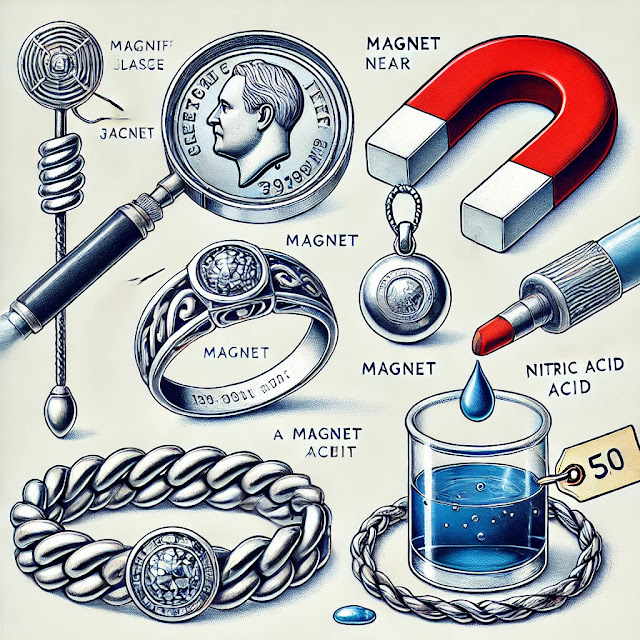Introduction
Silver jewelry is cherished for its timeless elegance and versatility. However, distinguishing between genuine silver and counterfeit pieces can be challenging, especially for the untrained eye. This article provides quick and easy methods to help you determine if your silver jewelry is real. Additionally, we'll explore how the cost of silver jewelry can serve as an indicator of its authenticity.
Visual Inspection
Hallmarks and Stamps
One of the simplest ways to check if silver jewelry is real is by looking for hallmarks or stamps. Authentic silver jewelry typically bears markings such as "925," "Sterling," or "S.S." These stamps indicate that the piece contains 92.5% pure silver, the standard for sterling silver. Ensure the markings are clear and placed discreetly on the jewelry.
Color and Shine
Real silver has a distinct appearance: a bright, white metallic sheen that can appear almost luminous. It may develop a patina over time, giving it a slightly tarnished look. Fake silver often lacks this characteristic luster and may have a dull or brassy hue.
Physical Tests
Magnet Test
Silver is not magnetic, so using a magnet can help identify fake pieces. If your jewelry is attracted to a magnet, it is likely not made of real silver. However, this test is not foolproof, as some base metals used in counterfeit jewelry are also non-magnetic.
Weight and Density
Silver is denser and heavier than most metals used in imitation jewelry. Real silver jewelry should feel substantial for its size. If the piece feels unusually light, it might be made of a less dense metal.
Ice Cube Test
Silver has high thermal conductivity, meaning it quickly conducts heat. Place an ice cube on the silver jewelry. If the ice melts rapidly, it's a good indication that the piece is genuine silver. This test works best with larger pieces of jewelry.
Chemical Tests
Nitric Acid Test
For a more definitive test, you can use nitric acid. Apply a drop of nitric acid to a small, inconspicuous area of the jewelry. If the spot turns green, it indicates the presence of a base metal. Genuine silver will typically show a creamy white reaction. Exercise caution when handling nitric acid, as it is a hazardous substance.
Silver Acid Test Kits
Silver acid test kits are available for purchase and provide a reliable method for testing silver at home. These kits usually include acids, testing stones, and detailed instructions. Follow the kit’s guidelines to accurately determine the purity of your silver jewelry.
Cost as an Indicator of Authenticity
Understanding the Value of Silver
The cost of silver jewelry can be a strong indicator of its authenticity. Real silver has intrinsic value due to the metal's cost, which fluctuates based on market conditions. As of 2024, the price of silver is around $25 per ounce. Therefore, genuine silver jewelry, particularly heavier pieces, will reflect this cost.
Price Expectations
If a piece of jewelry is priced suspiciously low compared to its weight and design, it might be too good to be true. High-quality silver jewelry often includes labor costs and craftsmanship, which add to the price. Conversely, overpriced pieces do not necessarily guarantee authenticity but should prompt a thorough examination.
Conclusion
By employing these quick and easy methods, you can confidently determine whether your silver jewelry is real. Visual inspections, physical tests, and chemical tests all provide valuable insights into the authenticity of your pieces. Additionally, understanding the cost of silver jewelry can serve as a useful indicator, helping you make informed decisions and avoid counterfeit items. For a curated selection of authentic silver jewelry, visit our MLD Trading Store and explore pieces that embody true quality and craftsmanship.

No comments:
Post a Comment
Please comment if you want to see more posts like this.